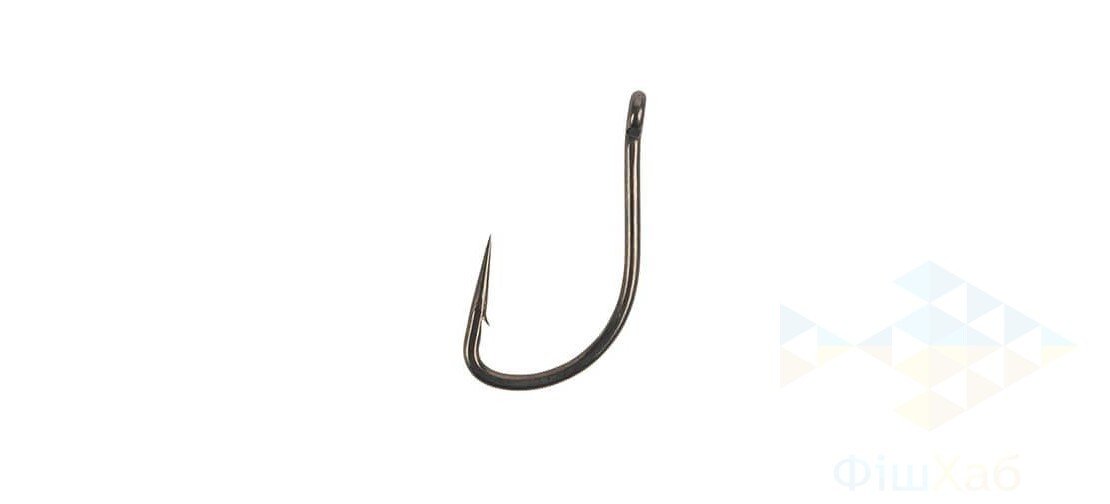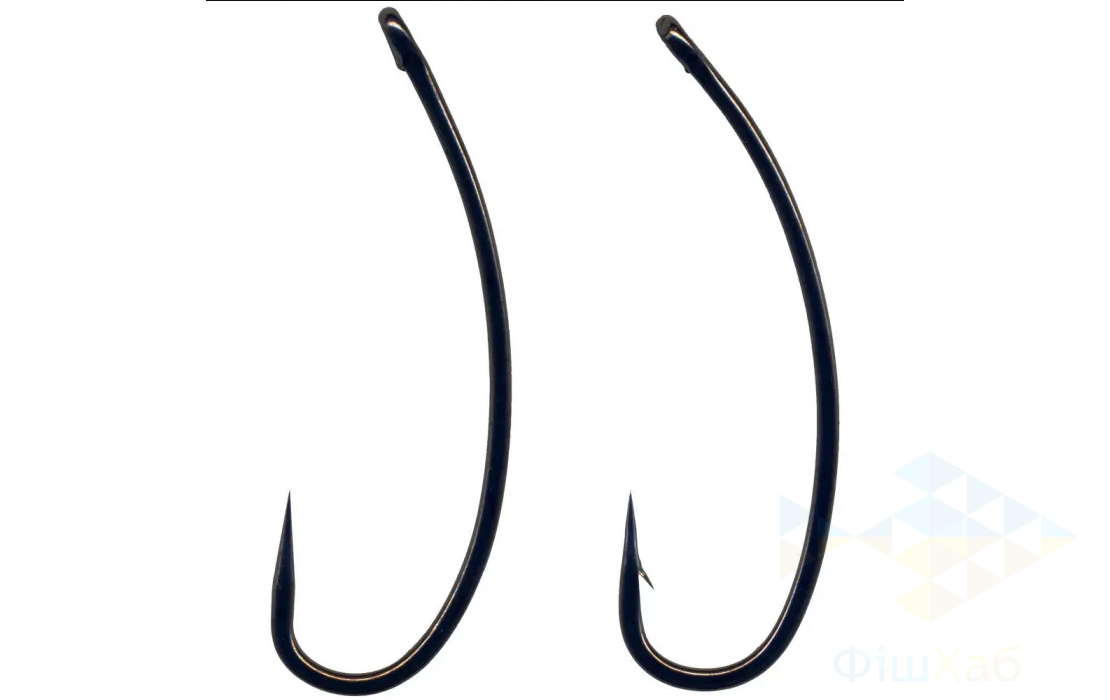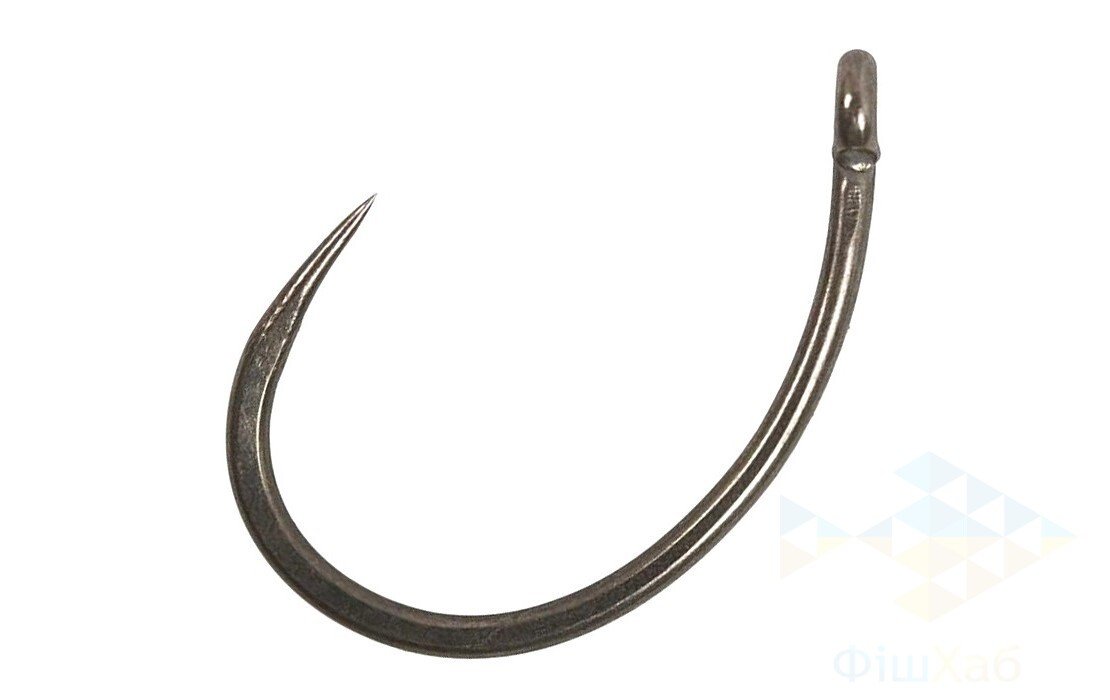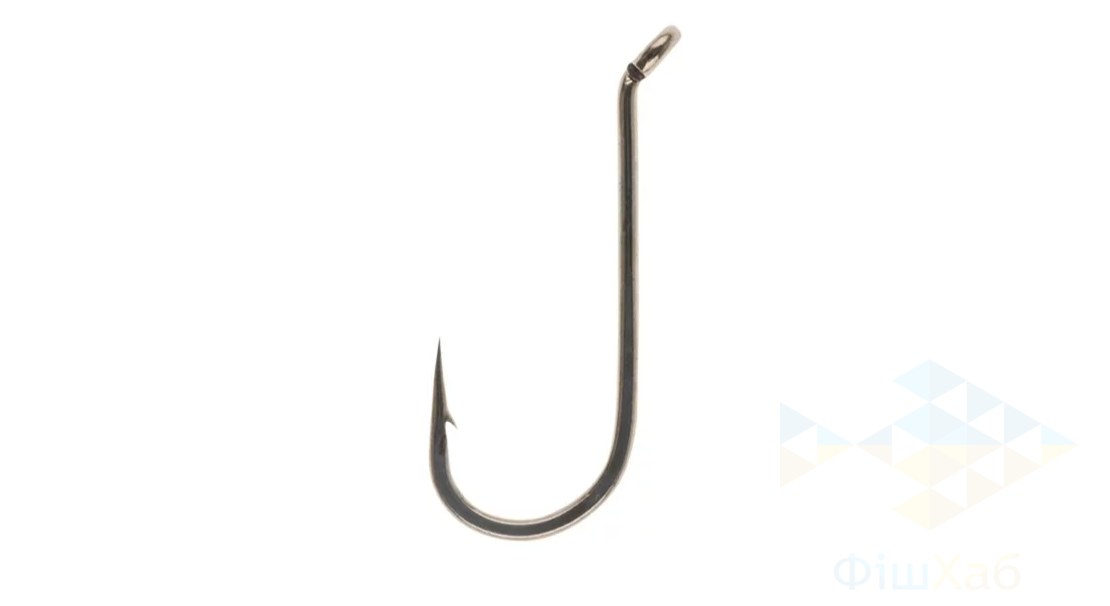By appointment
Universal hooks
Hooks for baits (nozzles) - within this type there are many forms, they can also be supplemented with special devices.
Carp hooks
The carp hook has priority. Unlike other types of fishing, the hook is not only tasked with catching carp:
- Before biting the hook, the carp must enter the mouth after the nozzle;
- Next, turn the sting downwards;
- And during spitting, hit the soft part of the carp's lips.
- Only after that the fish feels the hook and makes a jerk, which initiates the hook.
Differences of the carp hook from others
The main difference between a carp hook and those used on float equipment is that the nozzle is attached to it with a fishing line.
Wide Gape Hooks
Main features of Wide gape hooks:
- wide hook;
- direct thread;
- sting is directed parallel to the tip.
Which mounts are suitable for Wide Gape?
- Classic carp montage;
- Zig-rig if you use small size hooks, such as #10, with a straight barb.
Curve shank hooks
Difference Curve shank - curved shank. The stinger is bent towards the ring. There are modifications when the sting of the hook is directed directly into the ring. When the carp is biting, the hook unfolds and drives into the lower lip of the fish. Unlike the Wide Gape, this hook is easier to get into a fighting position due to its shape. Thanks to the curved tip, with each jerk of the fish, the Curve shank is pressed deeper into the lip, minimizing steps. In the case of improper hooking, when the hook does not go deep enough into the fish's mouth and hits the hardest part of the lip, this piece of equipment can bend or break. It can also squeeze itself out of the lip, severely injuring the carp's oral apparatus. In some reservoirs of Great Britain, the use of Curve shank is prohibited at all.
When is it better to use?
- In the case of frequent stairs.
Which mounts are suitable for the Curve Shank?
- KD rig;
- Blowback rig;
- Ronnie rig.
Long shank
This is a variety of Wide gape. It has a straight, elongated fore-end. Suitable for large nozzles. For example: two bottom boilers or a "snowman". This type of hooks is perfectly combined with fluorocarbon leashes.

Which mounts are suitable for Long shank?
- Blowback rig;
- D-rig.
Chod and Stiff
The eye is bent back, it sets the correct angle of the position of the hook in the water. All Wide Gape hooks apply. Thanks to this, it presents floating nozzles well, on installations using a rigid section made of fluorocarbon.

What mounts are suitable for Chod and Stiff?
- Short D-rig using a micro ring.
Usually, the packages of such hooks are labeled Shod or Stiff, which helps to immediately recognize the hook.
Who makes Chod and Stiff?
- Korda;
- ESP.
Long Curve Shank
Among fishermen, it is called "banana". The Long Curve Shank type hook has a long, elongated and curved tip. The design feature makes it possible to pierce almost any part of the carp's lip on the hook. Has a high penetrating ability.
If the Long Curve Shank is pulled out incorrectly, it can seriously injure the oral apparatus of the fish - tear off a part of the lip or cause a laceration. Therefore, this type of hook does not fit into the basic rules of carp fishing.

Which mounts are suitable for the Long Curve Shank?
- 360-rig;
- Blowback rig.
Krank
The Krank hook type is a certain symbiosis of Wide Gape and Curve Shank. The hook goes very well with floating nozzles. Often used without a beard.

How does Krank work?
Boyle should lie in such a way that the fishing line goes up. For this, there are special kits with a tubular plug and a thick drill. But the same effect can be achieved using a pop-up boiler.
Which mounts are suitable for Krank?
- Muzza-rig.
What types of fishing are suitable for Krank hooks?
- flat method.
When should you use Krank hooks?
- On a clean bottom, where there are no shells, stones.
Fly hooks
Special type of hook. It is used for fly fishing. It has a special shape and construction. Also optimized for fishing with artificial flies. Fly hooks often have a short tip and a wide sting. This ensures a good fixation of the fly and prevents it from slipping off the hook during casting and playing in the water.

Manufactured by:
- stainless steel
- carbon steel
- special alloys.
Sizes - from small hooks for catching small fish to large hooks for catching trophy specimens. A fly hook is an integral part of fly fishing equipment and allows the fisherman to create realistic imitations of insects and other lures that attract the attention of fish and contribute to successful fishing.
Standard Dry Fly Hooks
The most common type of hook for dry flies. They have a straight tip and a moderately wide sting..jpg)
Nymph Hooks for diving (Nymph Hooks)
They have a long bill and a slightly curved stinger to mimic diving insects.
.jpg)
Streamer Hooks
Used to create streamers - flies imitating fish prey. They have a strong construction, a long tip and a wide stinger for holding large and aggressive fish.
.jpg)
Emerger Hooks
Specially designed to imitate flies that are in the process of coming to the surface of the water. They have a bent tip and a small sting.
.png)
Specialty Hooks
There are also specialized types of fly hooks, such as carp, pike or salmon fishing hooks. They have features that make them ideal for certain types of fishing.
Hooks for mormysh
High demands are placed on mormyshek hooks. The most important parameter of mormysh hooks is their thickness.
Shape of hooks
- Aberdeen - most often used;
- Crystal - most often used;
- Kirby;
- Limerick.
